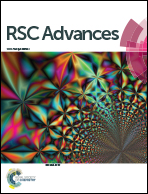Oligonucleotide length- and probe number-dependent assembly of gold nanoparticle on triangular DNA origami†
Abstract
Effects of oligonucleotide length and probe number on the assembly of gold nanoparticles (AuNPs) with DNA origami templates were investigated for the first time. The optimal length and probe number are proposed to efficiently anchor AuNPs for the construction of plasmonic chiral nanostructures.


 Please wait while we load your content...
Please wait while we load your content...